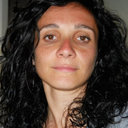Antifungal Activity of Some Constituents of Origanum vulgare L. Essential Oil Against Postharvest Disease of Peach Fruit.
Palabras clave
Abstracto
Plant essential oils (EOs) can potentially replace synthetic fungicides in the management of postharvest fruit and vegetable diseases. The aim of this study was to evaluate in vitro and in vivo effectiveness of thymol, carvacrol, linalool, and trans-caryophyllene, single constituents of the EO of Origanum vulgare L. ssp. hirtum against Monilinia laxa, M. fructigena, and M. fructicola, which are important phytopathogens and causal agents of brown rot of pome and stone fruits in pre- and postharvest. Moreover, the possible phytotoxic activity of these constituents was assessed and their minimum inhibitory concentration (MIC) was determined. In vitro experiment indicated that thymol and carvacrol possess the highest antifungal activity. Results of in vivo trials confirmed the strong efficacy of thymol and carvacrol against brown rot of peach fruits. The thymol MIC resulted to be 0.16 μg/μL against M. laxa and M. fructigena and 0.12 μg/μL against M. fructicola, whereas for carvacrol they were 0.02 μg/μL against the first two Monilinia species and 0.03 μg/μL against the third. Results of this study indicated that thymol and carvacrol could be used after suitable formulation for controlling postharvest fruit diseases caused by the three studied Monilinia species.




